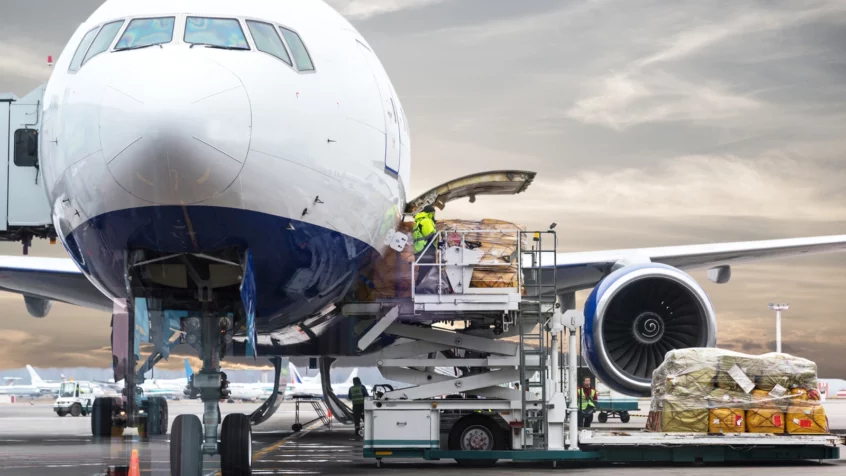Transporting perishable goods via air freight is a highly time-sensitive and specialized process that demands meticulous attention to detail. Whether you’re shipping delicate food products that need to maintain their freshness, life-saving pharmaceuticals that require strict temperature control, or other temperature-sensitive goods, this blog post will equip you with valuable insights and expert tips to navigate the process with confidence.
Proper planning is the cornerstone of a successful perishable goods shipment. Start by identifying the specific requirements of your goods, including the ideal temperature range, handling instructions, and any regulatory obligations. This information will guide your packaging choices and help you determine the most suitable transportation options.
Selecting the Appropriate Packaging
Choosing the right packaging is crucial for preserving the integrity of perishable goods during air transportation. Insulated containers, such as coolers or temperature-controlled packaging, should be used to maintain the desired temperature range throughout the journey. Consider the perishable’s specific temperature requirements, duration of transportation, and any potential external factors that may impact the cargo.
Temperature Control and Monitoring
Maintaining the correct temperature is vital to prevent spoilage and maintain the quality of perishable items. Work closely with your logistics provider to ensure proper temperature control throughout the entire shipping process. Use temperature monitoring devices and data loggers to track and record temperature fluctuations, allowing you to intervene if necessary.
Compliance with Regulations
Familiarize yourself with the regulations and requirements imposed by relevant authorities, such as the International Air Transport Association (IATA) and local customs agencies. Understand the necessary documentation, permits, and certifications needed for transporting perishable goods. Compliance with these regulations will help avoid delays and ensure a smooth transport process.
Which entities in the United States regulate the import and export of perishable food?
- Food and Drug Administration (FDA): In the United States, the FDA is responsible for regulating and overseeing the safety of most perishable food products, including fruits, vegetables, seafood, dairy products, and processed foods. The FDA sets guidelines and enforces regulations related to food handling, labeling, packaging, and transportation.
- United States Department of Agriculture (USDA): The USDA is another regulatory agency in the United States that plays a vital role in ensuring the safety and quality of perishable food products. It primarily focuses on meat, poultry, and egg products. The USDA establishes standards for production, processing, and labeling, and it conducts inspections and enforces regulations to ensure compliance.
- International Organization for Standardization (ISO): ISO develops international standards for various industries, including food safety and quality management. ISO 22000 is a food safety management standard that provides guidelines for managing risks and ensuring the safety of perishable food products throughout the supply chain.
- Customs and Border Protection (CBP): Customs agencies, such as CBP in the United States, regulate the import and export of perishable food products. They enforce regulations related to customs clearance, documentation, inspections, and adherence to specific requirements for perishable goods entering or leaving a country.
- Local Health and Food Safety Authorities: Each country or region has its own local health and food safety authorities responsible for regulating and overseeing perishable food within their jurisdiction. These authorities set guidelines, conduct inspections, and enforce regulations to ensure the safety and quality of perishable food products at the local level.
Packaging and Labeling Requirements
Packaging and Labeling Requirements
Follow the guidelines for proper labeling and packaging of perishable goods. Clearly mark packages as “Perishable,” indicating the appropriate storage temperature and any handling instructions. Include all necessary product information, expiry dates, and any special handling requirements to facilitate smooth customs clearance and minimize the risk of mishandling.
Timing and Scheduling
Time is of the essence when shipping perishable items. Coordinate with your logistics provider to establish a suitable transportation schedule that minimizes transit time and maximizes the freshness of your goods. Consider potential delays or disruptions and opt for expedited or direct flights whenever possible.
Partnering with a Reliable Logistics Provider
Choose a reputable logistics provider experienced in handling perishable goods via air freight. Ensure they have robust quality control measures, reliable temperature-controlled facilities, and a track record of successful and timely deliveries. A knowledgeable logistics partner can offer valuable guidance, handle documentation, and navigate potential challenges effectively.
Communication and Visibility
Maintaining clear and open communication with all parties involved in the shipping process is essential. Stay in constant contact with your logistics provider to receive real-time updates on the status of your shipment. Proactive communication will enable you to address any issues promptly and ensure the smooth flow of information.
In conclusion, transporting perishable goods via air freight requires meticulous planning, attention to detail, and compliance with regulations. By selecting appropriate packaging, ensuring temperature control, following packaging guidelines, and partnering with a reliable logistics provider, you can minimize risks and ensure your perishable cargo arrives fresh and intact. Stay proactive, communicate effectively, and stay updated on the latest industry best practices to guarantee a seamless transportation process for your valuable perishable goods.

